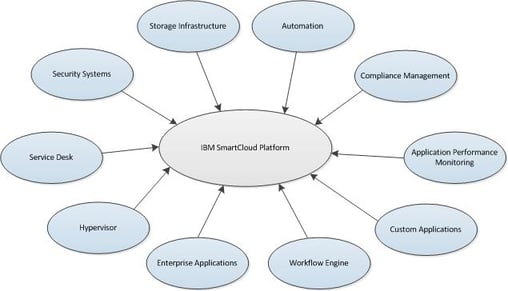Every March, IBM invites customers and analysts to its annual Pulse user conference. This year, Pulse was all about the more efficient delivery of IT services, a concept that is usually referred to as “cloud”. Since cloud has developed into a term that, due to its overuse, is often frowned upon, to say the least, it was great to see IBM try hard to demystify this elusive concept, backing it up with numerous case studies and customer testimonials. The fact that many of these case studies were not as polished as you so often see during this type of show, made the experience actually better. It became clear that these were real customers, implementing “cloud” to solve very specific corporate problems and while doing this, running into very specific IT problems. This is something that just happens when breaking new ground and it speaks for IBM’s self confidence to not present only squeaky clean projects at its show.
While the concept of cloud, or IT-as-a-Service is still in its infancy, cloud solutions are already able to solve vital problems today, leading to massive efficiency gains and the resulting competitive advantages. IBM has successfully repackaged many of its Tivoli offerings into its SmartCloud framework. Listening to some of the initial SmartCloud customers reveals the multitude of considerations and pitfalls when implementing a cloud solution. The main challenge is that cloud solutions do not exist in a vacuum, but depend on a myriad of other enterprise systems. If the cloud delivery does not connect to these systems or if one of these connections breaks, for example, because of an unsupported software upgrade, significant operational disruptions will result. Obviously, this is not at all an IBM-specific problem, but an issue that is caused by the nature of the beast. Unless you buy absolutely all of your systems – software and hardware – from one single vendor, you will run into interface issues.
Looking past these obstacles, IBM postulates Business Process-as-a-Service as the ultimate goal for IT. This means, moving IT services out of the mucky data center environment and into the line of business, where they can be consumed by stakeholders from the various business units to achieve a competitive advantage in the marketplace. This radically changes the role of IT from being a necessary evil to becoming a strong business differentiator.
Now let’s talk about the technology infrastructure behind the IBM SmartCloud. What we find is a set of optimized and integrated Tivoli solutions. This is a good thing, as all of these solutions went through many iterations and thousands of customer deployments. Here they are:
a. Tivoli Service Automation Manager
b. IBM Service Delivery Manager
d. IBM SmartCloud Provisioning
e. Tivoli Provisioning Manager
g. Tivoli Compliance Insight Manager
h. Tivoli Security Compliance Manager
i. Tivoli Security Information and Event Manager
j. Tivoli Security Operations Manager
k. Tivoli Usage and Accounting Manager
IBM summarizes the central goal of its cloud strategy using the following three key concepts:
Visibility: The ability to view service performance in a real-time business, compliance, and operational context allows the IT department to eliminate problems before they develop an actual business impact.
Control: Proactive monitoring and maintenance of all cloud infrastructure and tracking of problem patterns frees up staff time that can then be used on task aimed at creating strategic differentiators.
Automation: Increased performance, reliability, and efficiency, due to automation allow the organization to deliver better value to its customers and win more business.
The overarching goal here is to allow the organization to spend its IT budget on strategic instead of operational tasks. For most organizations Business Process-as-a-Service is still several years away, however, it was great to see that IBM understands exactly this fact, while still offering a broader vision of where we will be in five years.
I look forward to next March to see how the IBM cloud story continues and especially, to hearing from more customers.




